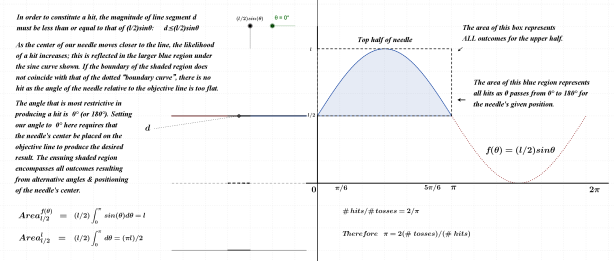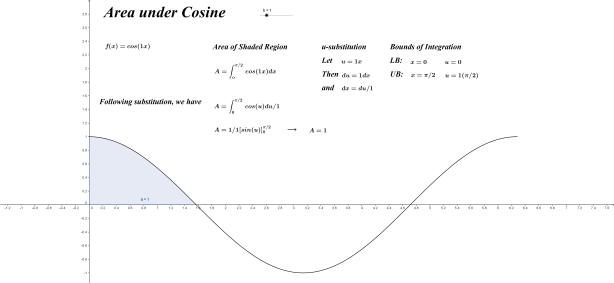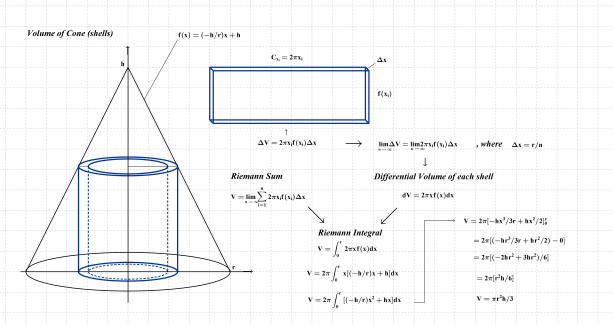I’ve always liked using the “onion proof” as an easy approach to showing students why the area of a circle is what it is. I also strive to fold in as many previously learned concepts as possible when introducing new ones. Fermat’s non-uniform partitions provide a very rich approach to deriving areas. This approach as it applies to the circle is shown directly below. As you will see, factoring skills that students have learned in Grades 10 and 11 are put to work and out pops the circle’s area; students like this.
The Setup
A line on [0,1] was first drawn, then partitions based on q=0.5 identified; those partitions were then summed and the total approached 1 (as it should). This idea was then connected to the formula for sum of infinite geometric series (which was also quickly derived). Additional iterations with q=0.9 and q=0.99 revealed that the non-uniform partitions would become “more uniform” as “q” approached “1”. This idea was then generalized over the interval [0,r] and the lengths of each sub-interval determined.
Concentric circles were eventually drawn around the lower bound of the main interval and the area of each annulus was reasoned out through discussion. It was concluded that the upper bound of each sub-interval could be used to represent the length of each annulus, with the span of the corresponding partition equal to its width. It was agreed upon that these annuli, when”sliced” and “unrolled”, formed rectangles whose areas were easily determined.
Lengths, widths, and ultimately areas of at least 3 of these rectangles were recorded and then summed. Some simple factoring revealed a “new” expression with recognizable components. After some simplification, “q” was replaced with “1” and out popped a very good estimate for the area of a circle.
This process was then repeated for f(x)=x^2 and f(x)=x^3 since the factoring skills required for those was also in place. The entire process was then generalized and applied to the function f(x)=x^n and from this, our expression F(x) was determined.
Shown below are the circle and f(x)=x^n. The links provided here allow students to adjust the common ratios for each and view the resulting partitions.
Non-Uniform Partition Exploration: Circle

If we were to sketch a function of area “A” with argument “q”, we would find that it has a point of discontinuity at (1, πr^2). We can say that the function has a limit of πr^2 as “q” approaches 1.
Non-Uniform Partition Exploration: f(x)=x^n

Thanks for looking.
Reference
Courant, Richard., John, Fritz (1999). Introduction to Calculus and Analytics: Classics of Mathematics. New York, NY: Springer-Verlag Berlin Heidelberg.

























